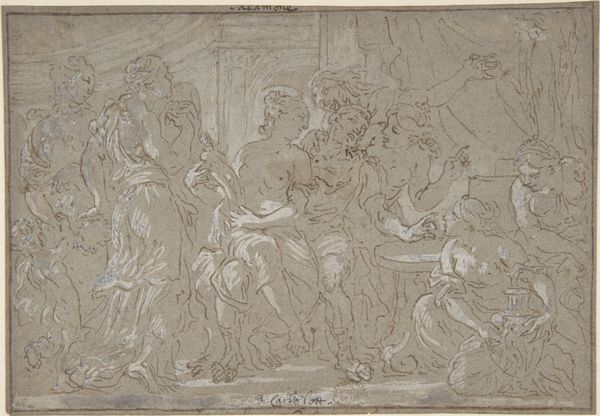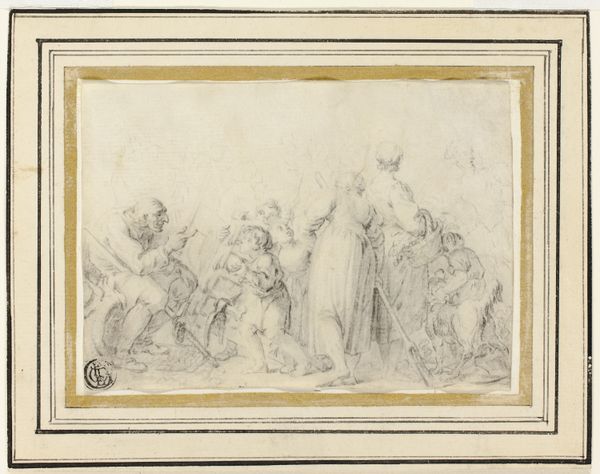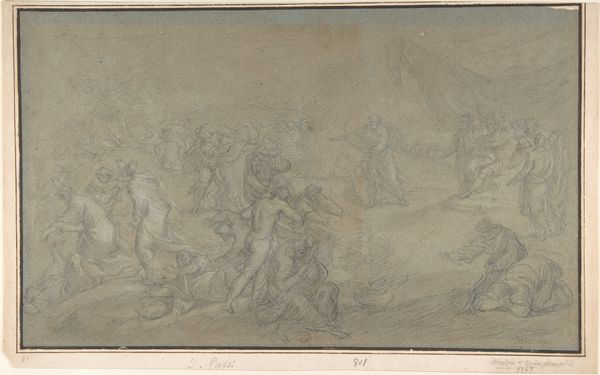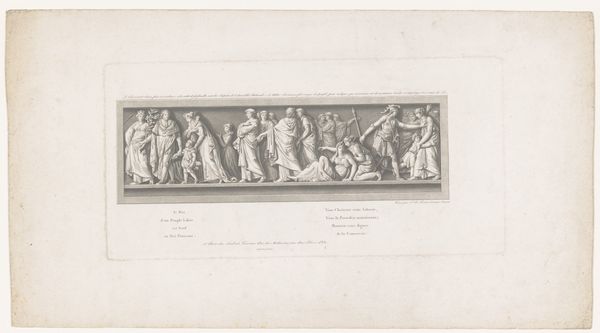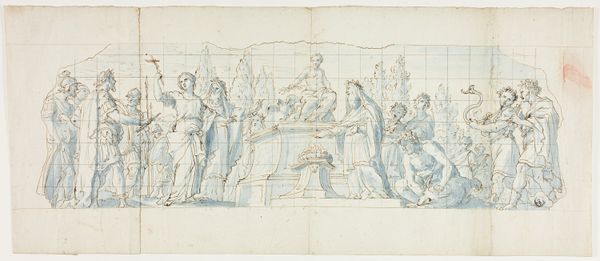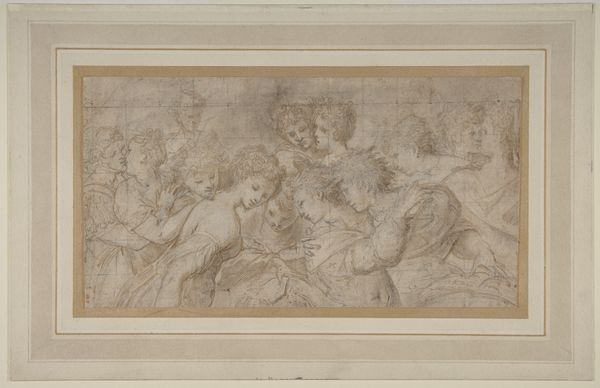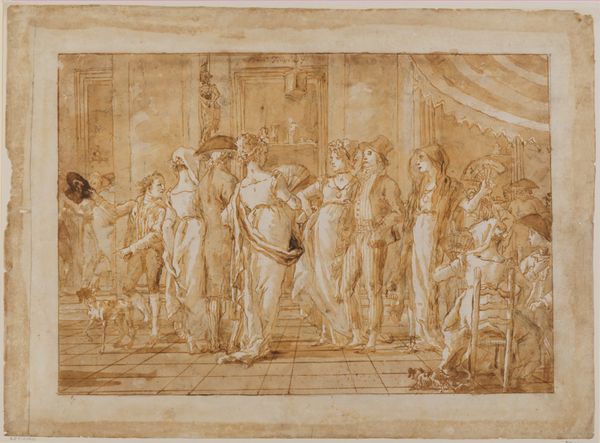
Roman or Greek Warriors Celebrating after a Victory. 1503 - 1540
0:00
0:00
drawing, print
#
drawing
# print
#
figuration
#
soldier
#
men
#
history-painting
#
italian-renaissance
Dimensions: 4 5/8 x 8 7/8in. (11.8 x 22.5cm)
Copyright: Public Domain
Curator: Here we have a work attributed to Parmigianino, the Italian Renaissance artist, dating from approximately 1503 to 1540. The piece, "Roman or Greek Warriors Celebrating after a Victory," utilizes ink drawings or prints. What is your first take on it? Editor: Initially, the subdued monochrome lends it an almost ghostly air, as if recalling a celebration long past. The composition feels dense, figures tightly packed together. It strikes me as intentionally chaotic, perhaps mirroring the frenzy of victory. Curator: Yes, I agree with your point on its compositional complexity. Notice the interplay between the overlapping figures; it creates a dynamic visual rhythm that prevents the eye from settling. There's an intriguing push and pull of positive and negative space that enlivens the entire composition. Editor: Looking at it through the lens of classical imagery, victorious soldiers, then and now, often embody specific virtues—courage, strength, and, of course, patriotism. The celebratory acts become symbolic expressions, reinforcing their identity and their role within the broader social fabric. The upraised hands, the clinking of presumed cups...these gestures become loaded signifiers of power and belonging. Curator: Precisely! And considering the Renaissance context, Parmigianino demonstrates an understanding of classical art principles but doesn't strictly adhere to them. The slight distortions in anatomy and the somewhat exaggerated poses contribute to an expressive quality distinct from, say, the idealized forms of High Renaissance art. It’s as though the artist seeks to inject drama through calculated deviations from established norms. Editor: Those "deviations" speak volumes about the cultural anxieties that art addressed. It captures the psychological state of men at war, I think. Their fervor, but also, perhaps, the unease and instability of such a fleeting moment of conquest. The sketchlike quality also evokes a kind of vulnerability that might contrast to traditionally triumphant historical subjects. Curator: Your comments bring up the temporal quality of victory: fleeting, but also able to last through visual expressions in drawings such as this. Editor: It leaves me pondering the cyclical nature of such scenes; similar images of triumphant celebrations have echoed across history. I think about the symbols, about our recurring desires. Curator: A worthwhile sentiment and, I think, a strong final remark.
Comments
No comments
Be the first to comment and join the conversation on the ultimate creative platform.
